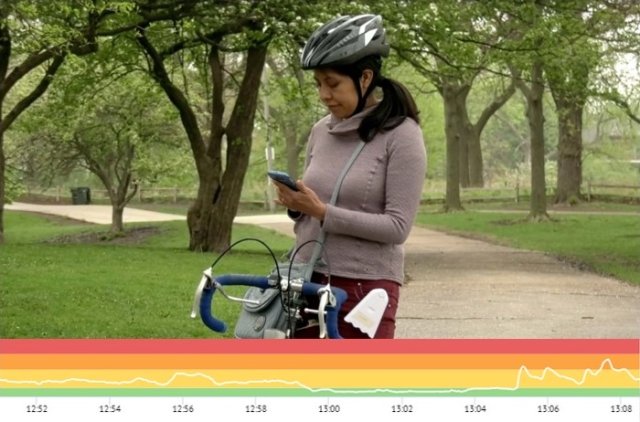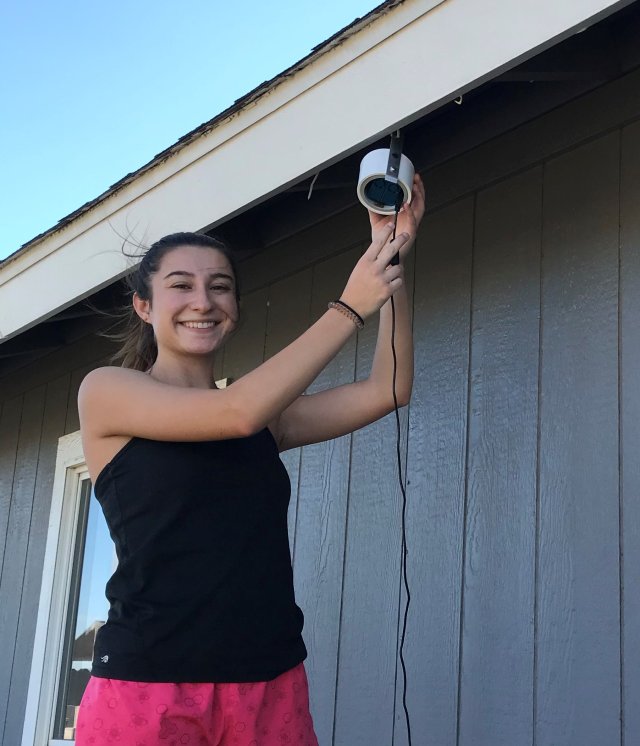Air Sensor Loan Programs: Promoting Air Quality Education by Bringing Sensors to You!
Published February 14, 2023

Air sensors are non-regulatory technologies that measure air quality and are often smaller, lower in cost, more portable, and easier to operate than regulatory air quality monitors. The availability, demand for, and use of sensors is increasing as interest in local air quality grows. However, sensors are not always accessible to potential users and guidance on using sensors might not be available.
When the Los Angeles Public Library (LAPL) reached out to EPA Region 9 in 2018 with an interest in expanding their neighborhood science programs, the idea to start a pilot air sensor loan program was born. That effort cascaded into a series of pilot programs in select states in EPA Regions 5 and 10 that would eventually establish best practices for future sensor loan programs across the country.
The LAPL had a vision of allowing community members to measure local air quality and the impact of air pollution sources in their communities. As with all air monitoring projects, the first step was to consider the pollution sources of interest, what air pollutants to measure, and whether an air sensor was an appropriate choice to make the measurements. “Because the library was partnering with EPA for a one-time grant to start the program, we needed to consider the cost of sensors and data access, longevity of the equipment, and potential ongoing maintenance costs,” said Dr. Rachelle Duvall, EPA scientist and co-lead on the project. Additionally, the library needed to think about their patrons and ensure that sensors were user-friendly, worked with mobile phones commonly used by patrons, and ensured user privacy.
The library also had a desire to host community programs, bringing patrons into the library to do hands-on learning activities led by a neighborhood science librarian. “To support this, we also considered what resources the librarians might need to accomplish this goal and decided background material on air quality, hands-on lessons, and resource guides would empower the librarians to educate their communities,” said Dr. Andrea Clements, EPA scientist and co-lead for the project.
In partnership with EPA researchers, the final design of the LAPL pilot air sensor loan program included four components:
- Hand-held AirBeam2 sensors measuring fine particulate matter (PM2.5 – particles generally 2.5 microns in diameter or smaller).
- Support materials designed to give background information about air quality and sensors.
- Lesson plans that involve hands-on activities for sensor users of all ages.
- Training for the LAPL neighborhood science librarians to carry out and sustain the program.
The LAPL integrated the air sensor loans into their neighborhood science program just as they envisioned. “By combining information learned at library programs with firsthand experience of monitoring and interpreting air quality in and outside their homes, Angelenos will be able to make informed decisions for their health and well-being,” said Vivienne Byrd, the LAPL Neighborhood Science Program Lead. The pilot air sensor loan program has since expanded to incorporate the Air Quality Flag Program in some libraries, and the LAPL received funding from the Library Foundation of Los Angeles to purchase more air sensors to extend the program into other library branches.
More Regions Pilot the Program

Seeing the success of the pilot between EPA Region 9 and the LAPL, EPA Region 5 launched a pilot sensor loan program with a focus on helping organizations and libraries provide access to air sensors and education in remote and rural locations in Michigan, Indiana, and Illinois. The components of this program followed the LAPL program design and included stationary PurpleAir sensors for use at the pilot locations, as well as additional support materials for the AirBeam2 sensor operation including videos and user guides.
“We launched the AirBeam2 sensors on April 22, 2022, at Howell Wetlands’ Earth Day celebration. This was very helpful and people found the readings fascinating,” said Katie Reineke, Experience Manager at Evansville Vanderburgh Public Library in Indiana. “Some expressed worry about damaging the sensor or not being able to work them correctly. I directed them to the information that comes with the kits. Four of the five sensors I took with me to the event got checked out.”
Another partner, The Morton Arboretum in Illinois, adapted EPA’s lesson plan on vegetative barriers for air pollution protection to create a toolkit for schools and communities in the Chicago area. The sensor loan program in EPA Region 5 has since expanded to include more sensors and locations in Minnesota, Ohio, and Wisconsin.

EPA Region 10 also launched a pilot sensor loan program designed to provide access to air sensors in communities within and near Tribal reservations that are often impacted by wildfire smoke, outdoor burning, and residential wood heating. The Region 10 program was built on the Tribal Air Team’s existing Portable Air Monitoring Device Loan Program for Region 10 Tribes. Using the same primary program components as the LAPL and Region 5 sensor loan programs, EPA Region 10 expanded the available support materials to include quick start guides for the PurpleAir sensor and education about smoke exposures. Partners including Nez Perce Tribe rural libraries (Idaho), Heritage University on the Yakama Reservation (Washington), and the Institute of Tribal Environmental Professionals (ITEP, Arizona), received training to serve as air sensor and air quality educators for their communities.
“This project has allowed us to take our library partnership deeper and really support communities across the Reservation to increase awareness and action around smoke,” said Johna Boulafentis, Environmental Outreach Specialist from the Nez Perce Tribe Air Quality Program. “It’s one of the best things to come from 2020 in my book.”
In addition to the sensor loan program implementation, the Nez Perce Tribe incorporated the Air Quality Flag Program, do-it-yourself box fan air filter demonstrations and kits, a moisture meter loan program for firewood testing, and customized smoke-ready guidance translated into the Nez Perce language. Heritage University worked with students to test sensors across the Reservation. University students also taught the “Is this Smoke Affecting Me?” lesson plan to the Tribal High School Students as part of their successful EnvironMentors program. ITEP supported other Tribal partners by connecting them with ITEP interns and by deploying sensors to two tribal consortiums in Alaska, the Northwest Indian College in Bellingham, Washington, and the Port Gamble S’Klallam Tribe in Washington. “When the first pilot sensor loan project with the LAPL began, we had no idea how it might expand and take off. It is so exciting to see how this work encouraged interest and engaged communities and individuals,” said Duvall.
Future Growth: Expanding Access to Sensors
To help others interested in offering similar programs, EPA created a Best Practices for Starting an Air Sensor Loan Program guide full of lessons learned from these pilot projects. “Our hope is that other organizations – whether they be libraries, schools, community organizations, or local governments – might learn from our experience and be empowered to offer additional loan opportunities and further expand equitable access to sensors in the future,” said Clements.
Since initiating these pilot programs, all 10 EPA regions established air sensor loan programs independently and through collaborations with libraries, Tribes, museums, and others to enable the public to learn about air quality in their communities. Learn more about these air sensor loan programs, the best practices guide, and supplementary materials on EPA’s Air Sensor Loan Programs website.
*Note: EPA does not endorse specific commercial products, and mention of trade names or commercial products does not constitute EPA endorsement or recommendation for use.
Learn More:
Best Practices for Starting an Air Sensor Loan Program
EPA’s Air Sensor Loan Pilot Programs: Successes, New Resources, and Lessons Learned
Resource Guide for Air Sensors and Related Educational Activities
Five Hands-on Lesson Plans: Using Air Sensors to Teach About Air Quality
